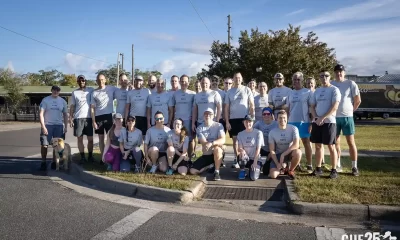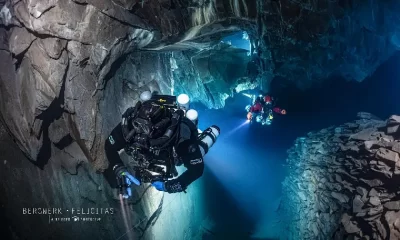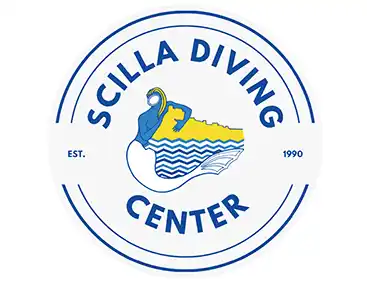Equipment
Not All mCCRs are Created Equal: The Case for the Needle Valve
Forget those ‘leaky valves!’ The mechanical FATHOM CCR’s secret sauce is a specially-designed needle valve that enables divers to dial in their oxygen flow rate underwater eliminating the need for pesky electronic controllers and solenoids—or so proponents say. Here chief proponent and needler, Charlie Roberson, founder and CEO of FATHOM Dive Systems, explains the details and logic of this innovation.
By Charlie Roberson. Images courtesy of C. Roberson unless noted. Full Disclosure: FATHOM Dive Systems is an InDEPTH sponsor.

See accompanying story, “Grokking The FATHOM CCR: My Personal Experience and a Short Interview with the Founder” by Jon Kieren
Lately, I’ve seen a number of rebreather experts expounding on the advantages and more often the disadvantages of mechanical closed circuit rebreathers (mCCRs) compared to electronic closed circuit rebreathers (eCCRs). While some of their criticisms have been fair in regard to traditional fixed-orifice mCCRs, they have failed to mention an entire category of mCCRs that employ a needle valve to solve most, if not all, of their criticisms.
CCRs are broadly categorized as either electronic or mechanical, which refers to how they add oxygen. eCCRs utilize an electronically controlled solenoid that adds small bursts of oxygen to the loop as needed while most mCCRs use a fixed-orifice constant mass flow (CMF) valve, aka leaky valve, that constantly bleeds a small amount of oxygen into the loop to meet the diver’s minimum metabolic needs. The diver must then add oxygen manually to maintain their desired PO2. A less common but growing variation of mCCR uses a needle valve, a type of valve with a small port and a threaded, needle-shaped plunger that allows precise regulation of oxygen flow, and can be adjusted underwater to match the diver’s ever-changing metabolic requirements.
While the eCCR does its job very well, which is to maintain oxygen partial pressure (PO2) at a preselected setpoint, it has no idea whether you are scootering over a hill or trying to maintain perfect buoyancy in a low silty passage. If the PO2 falls below the setpoint, the eCCR is going to add oxygen, sometimes when you least want it. mCCRs, on the other hand, are entirely diver controlled. There is no self-driving feature adding oxygen whether you want it or not. The mCCRs constant flow of oxygen prevents unwanted buoyancy shifts or wasted oxygen going over hills.

In my opinion, the safest way to dive an eCCR is manually with the solenoid set at a low set-point. In this mode, the diver manually adds oxygen to maintain a desired setpoint and the solenoid only fires if the diver fails to do so. Most eCCR divers are trained this way and can attest that it’s a bit of work and can add task-loading to an already complex dive. The other option is to allow the solenoid to do the work while the diver simply monitors the system. This method can lead to complacency as the diver comes to rely on the reliability of the electronics.
Conversely, mCCRs promote good habit formation. All CCR divers are taught that the number one rule of CCR diving is to know your PO2 at all times. However, only an mCCR actually forces the diver to practice this rule, which, over time, becomes habitualized and part of your dive routine. I wouldn’t recommend it, but you could probably dive a modern eCCR 100 times without even looking at the PO2 monitor. However, that 101st time when the battery dies, or the oxygen is turned off, you are going to have a really bad day. Let’s hope that, when the inevitable happens, you have formed good PO2 monitoring habits.
It’s A Matter of Valves
The main criticism of a traditional fixed-orifice mCCR is that the oxygen flow must be set to the diver’s resting metabolic rate, and then requires the diver to manually add oxygen at depth to meet their metabolic needs. Unfortunately, this requires the most attention when the diver is working hard and possibly task loaded. While not quite as much work as diving an eCCR manually, this can certainly add to task loading.
Enter the needle valve. The needle valve, which allows for precise regulation of oxygen flow, has all the advantages of a fixed-orifice constant mass flow (CMF) system with few, if any, of the drawbacks. The key difference between a needle valve and a traditional fixed-orifice is that the needle valve can be adjusted in the water during the dive. However, unlike some of the needle valve systems of the past that used a depth-compensated first-stage that requires the diver to adjust the oxygen flow with depth changes, the FATHOM CCR employs a needle valve with a blocked non depth-compensated, or absolute pressure, first stage, creating a unique adjustable, on-the-fly CMF system.

This system consists of two main components: the absolute pressure oxygen regulator, which provides CMF, and the needle valve, which provides in-water adjustability. These components work together to give the diver the best of both worlds. The needle valve allows the diver to precisely set the oxygen flow to match their workload and the CMF eliminates the need to constantly adjust the needle valve with depth changes.
Once the needle valve is dialed into the diver’s metabolic needs, it only needs to be adjusted when those needs change, such as swimming versus hanging on deco. While this may sound challenging, brand new CCR divers frequently comment on how intuitive and easy to use it is.
Dealing with Depth Limitations
The other frequently noted drawback of a mCCR with a CMF regulator is a depth limitation that is reached when the first-stage intermediate pressure is equal to the ambient pressure. For example, a CMF system with a 10 bar/145 psi intermediate pressure (IP) has a practical depth limit of 81 msw/260 fsw [1]. The Fathom CCR addresses this by modifying the oxygen first-stage with a stronger spring that allows for much higher intermediate pressures.
The first-stage intermediate pressure is set at 14 bar/205 psi for a practical depth limit of 120 msw/400 fsw. If a deeper maximum depth is needed, the intermediate pressure can be increased in the field to 20 bar/290 psi for a practical depth limit of 180 msw/600 fsw. Deeper than that, a standard depth-compensated first-stage can be used. Low pressure hoses rated for 28 bar/400 psi are used to safely handle the increased pressures, which is actually easier on the first-stage high pressure seat due to the lower pressure differential.

Smaller orifices and higher intermediate pressures can also be used in a traditional fixed-orifice mCCR for deeper depths, but the risk of a blockage from debris is significant, and the options are limited by orifice availability. Conversely, the needle valve minimizes the risk of a blockage from debris, since it can be opened up to allow small particles to pass.
Lately we’ve started seeing slider shut-offs on the oxygen feed of traditional fixed-orifice mCCRs. This is done to keep the oxygen on and pressurized while limiting oxygen loss at the surface. This practice is controversial for obvious reasons. The needle valve eliminates the need for a shut-off on the oxygen feed, since the needle can be turned down to < 0.1 lpm flow. This doesn’t completely shut off the flow but keeps oxygen loss at a minimum on the surface. Since the needle valve is actively adjusted during the start of the dive, it doesn’t pose the same risk of being overlooked as the shut-off valve.
Despite the perceived disadvantages of mCCRs, their popularity continues to grow proving that divers value the simplicity, robustness, and diver control that mCCRs provide. However, the next time you hear someone pointing out the disadvantages of mCCRs, take note as to whether they mention the needle valve. My guess is that they probably won’t, since the needle valve eliminates most, if not all, of their criticisms.
Footnote:
1. (10 bar/1 bar/ata – 2 ata) x 10 m/ata = 80 msw or (145 psi/14.7 psi/ata – 2 ata) x 33 fsw/ata = 260 fsw Note: always subtract 2 ata when calculating the maximum operational depth of a CMF system. You don’t want to be on the backside of the depth limit curve, since the oxygen flow starts slowing down before it stops flowing completely.
For another perspective regarding eCCR vs mCCR, Divesoft’s Jakub Šimánek argues that human divers are the weak link in CCR diving not electronics: Building A Fault Tolerant Rebreather: Our Path to Simplicity, InDEPTH(2021)
Dive Deeper
Advanced Diver Magazine: Understanding CMF Constant Mass Flow by Paul Raymaekers
Youtube: How needle valve works
Advanced Diver Magazine: Dead in 7 Minutes: The Importance of a Constant Flow Oxygen Orifice by Curt Bowen
KISS: The mCCR explained by Tony Land
Therebreathersite.nl: The Pelagian DCCCR rebreather is a legacy mCCR that uses needle valve with a depth-compensated first-stage that increases the intermediate pressure as depth increases. As a result, the diver must adjust their oxygen flow with depth changes.

Charlie Roberson is a former attorney who lives and works in Gainesville, Florida. He is the founder and CEO of FATHOM Dive Systems, LLC, a manufacturing company that focuses on life-support equipment for underwater exploration.
Charlie learned to dive in 1991 while serving in the U.S. Navy. He then spent the next two years diving the wrecks and deep walls of the Western Pacific. After returning to the states, he moved to Gainesville to attend the University of Florida and take up cave diving. Years later, he is still cave diving and currently holds the world record for penetration in an underwater cave at 8,208 m/26,930 ft.
Charlie is a director of Karst Underwater Research (KUR) and has participated in numerous KUR exploration and survey projects. He is currently serving a two-year term on the National Speleological Society – Cave Diving Section (NSS-CDS) board and is the chairman of the NSS-CDS Accident Analysis Committee.





















































